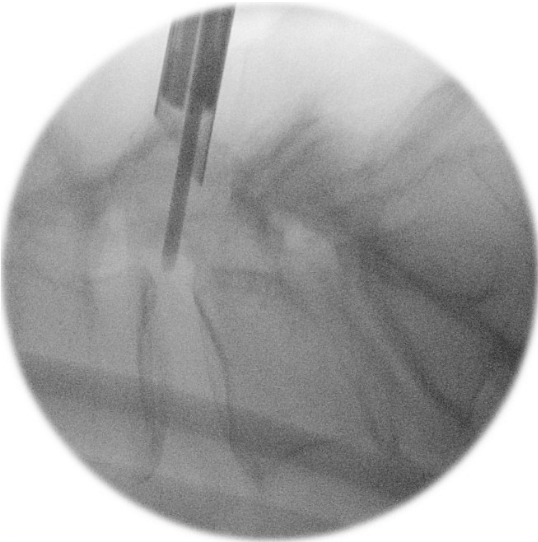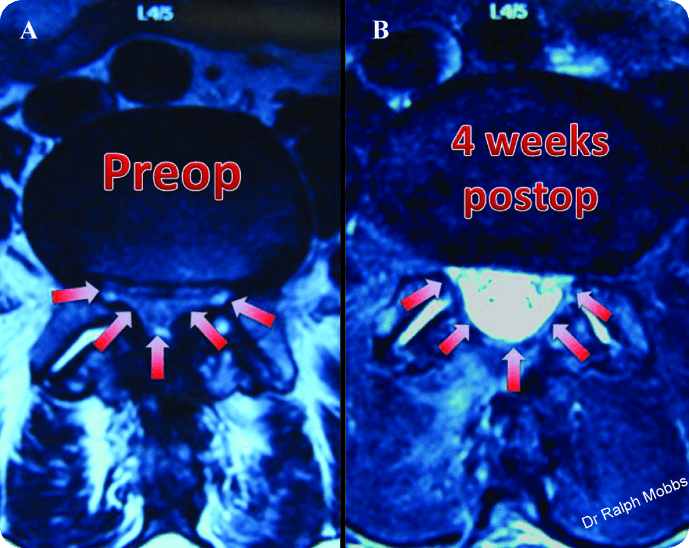Endoscopic Spine Surgery
What is Endoscopic Spine Surgery?
Endoscopy is an ultra-minimally invasive form of spine surgery.
By combining tiny incisions (less than 1 cm) with high-definition endoscopic visualisation, a range of procedures can be performed, minimising the amount of disruption to normal tissues. Endoscopic spine surgery encompasses a number of different procedures, including discectomy for bulging disc’s, decompression for stenosis/degeneration and even fusion surgeries when appropriate. Endoscopic spine is performed as day surgery for many of the interventions with a rapid recovery.

Conditions
Endoscopic spine surgery proves effective in addressing a spectrum of spinal conditions.
Some of these include:
Facet Syndrome
Herniated Bulging Disc
Spinal Stenosis
Arthritis
This is due to wear and tear of your body – in particularly the joints, unfortunately it is inevitable! Arthritis can affect your shoulder, hands, hips, knees and your spine as it has multiple joints. There are different ways to treat arthritis in the spine, and often surgery is not first line, but if required is an option to improve your quality of life.
Bulging disc
The spinal discs are composed of water, proteins and collagen to help facilitate movement of the spine. With time they can bulge outwards but not every bulging disc causes problems. A bulging disc can be completely asymptomatic, or they can cause pain in down the arm or leg, or worse spinal cord compression. A bulging disc does not usually cause neck or back pain alone.
Discogenic back pain
This occurs when arthritis affects the intervertebral disc and the surrounding bone. The intervertebral disc is a joint just like the hip and knee, so can be affected by wear and tear resulting in degeneration and inflammation. This can present as neck pain or lower back pain.
Sciatica
This is referred pain down the leg along the sciatic nerve distribution. It is often caused by compression of the nerve from a herniated disc, or arthritis in the spine, but sometimes can be from a cyst or even tumour. If the compression is severe enough weakness can result with irreversible injury, so urgent medical attention is required.
Abnormal bony spurs in the spine
Bony spurs occur with arthritis. In the spine, they commonly occur from the joints but also can occur along the ligaments of the spine. Extra bony growth can compress the nerves or spinal cord resulting in pain and weakness. Unfortunately, because it is extra physical bony growth often surgery may be required to remove the excess bone to relieve the pressure on the nerve or spinal cord.
Herniated disc
Where the inner gel-like material protrudes through the outer disc layer, causing nerve compression and pain.
Foraminal stenosis
The foramen is basically the opening in the side of the spinal bones where the nerve exits to supply feeling and movement to the arm or leg. Any narrowing in the foramen is what leads to foraminal stenosis, resulting in compression of the nerve. Foraminal stenosis can be seen with disc herniation, disc collapse, cysts, tumours, overgrown facet joints or bony spurs in the spine.
Radiculopathy
This occurs when a spinal nerve in the neck or back is compressed or irritated resulting in pain radiating in the pattern of the skin that the nerve supplies. Numbness, tingling or paraesthesia is also common and if the compression is severe enough weakness in the arm or legs can also result. Most patients recover without surgical intervention, but when required keyhole spine surgery with endoscopic techniques can achieve full recovery.
Chronic facet disease
Marked by degeneration or inflammation of the facet joints in the spine leading to persistent pain and reduced mobility.
This method of spine surgery is minimally invasive, resulting in significantly decreased surgical trauma as compared to traditional methods. As a result, quicker recovery times and reduced postoperative discomfort is facilitated.

Advantages of Endoscopic Spine Surgery
Being a minimally invasive procedure, there are a number of advantages to endoscopic spine surgery:
- Reduced tissue dissection and trauma to muscles
- Decreased post-operative pain
- Faster recovery time and shortened hospital stay
- Minimised surgical risks, such as infection, epidural fibrosis, scarring or bleeding
- On par with traditional open surgery in terms of its pain resolution
- Does not require the use of general anaesthesia, increasing the scope of patients it can safely be performed on
In addition, endoscopic spine surgery can be an alternative option to avoiding fusion.
Make an appointment
Your well-being is our priority, and we invite you to experience the transformative impact of advanced spinal care.